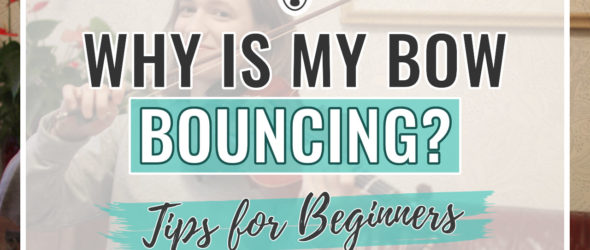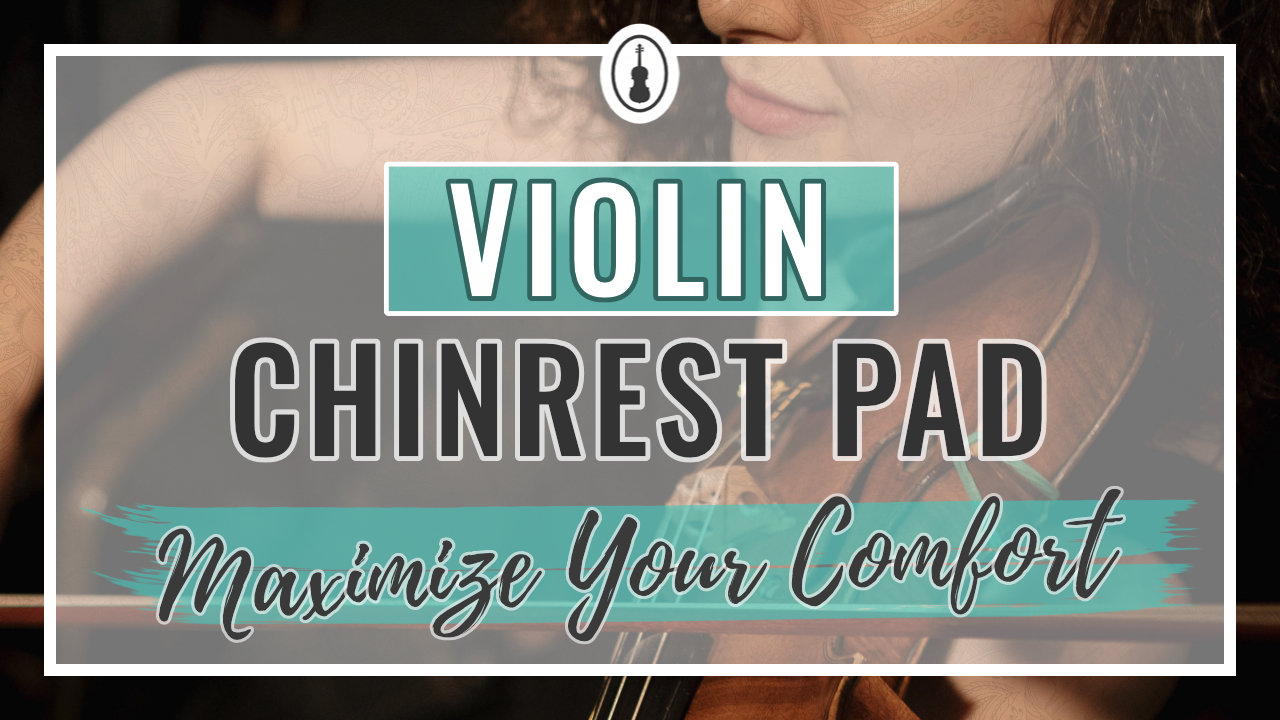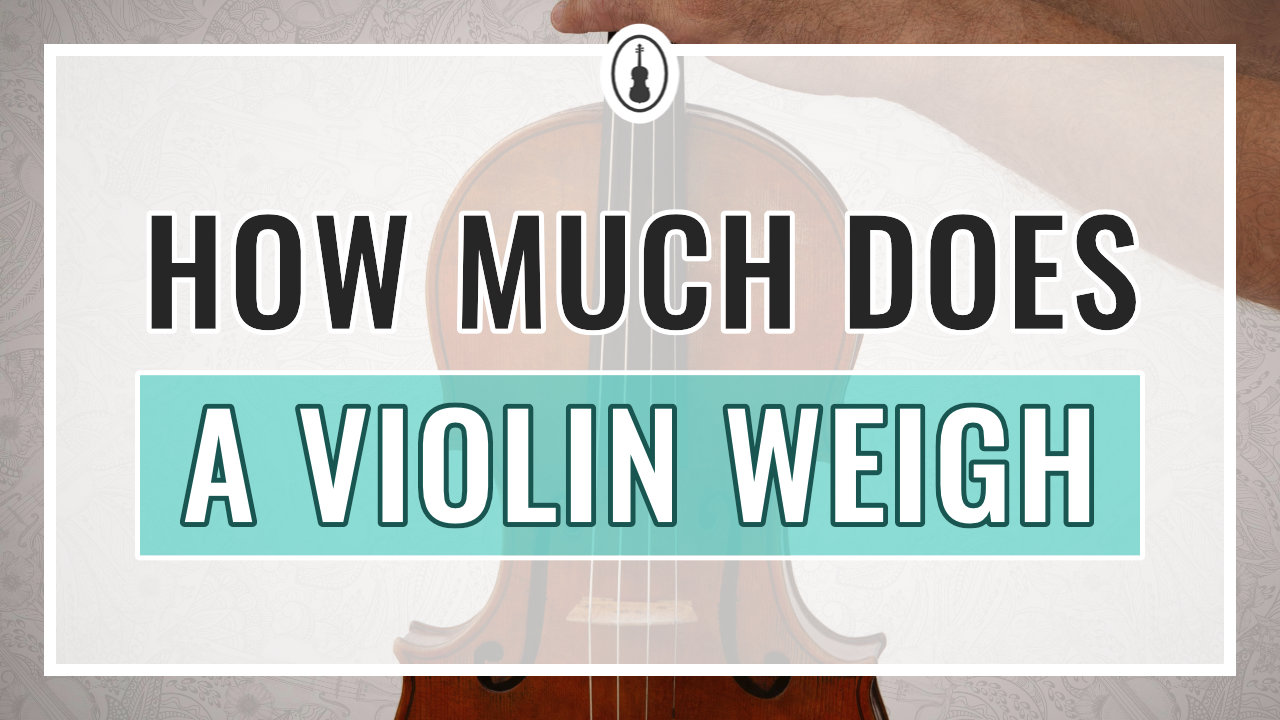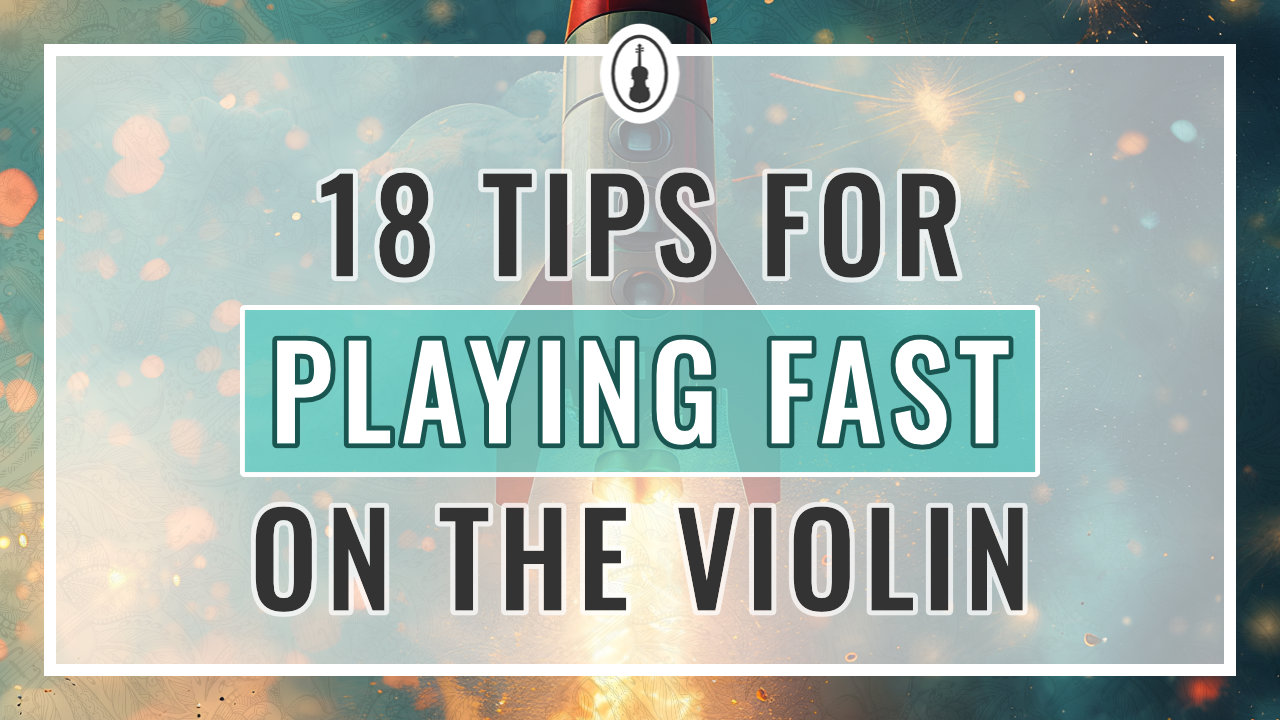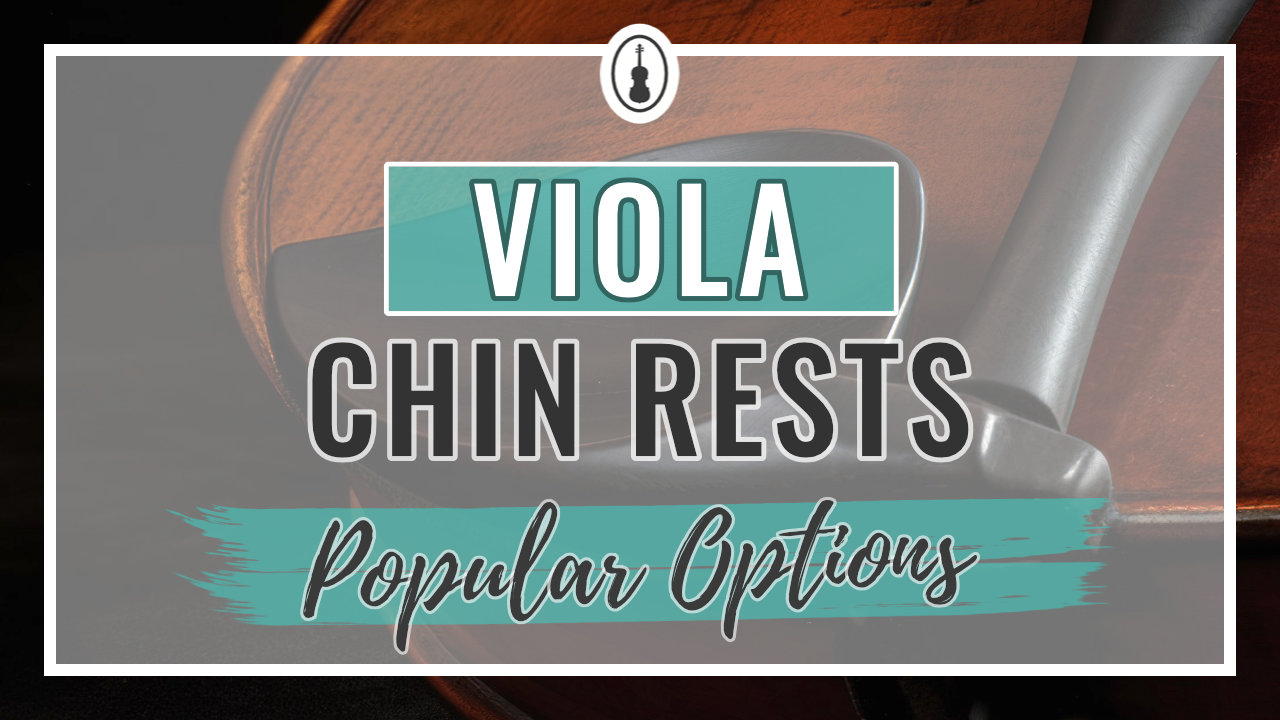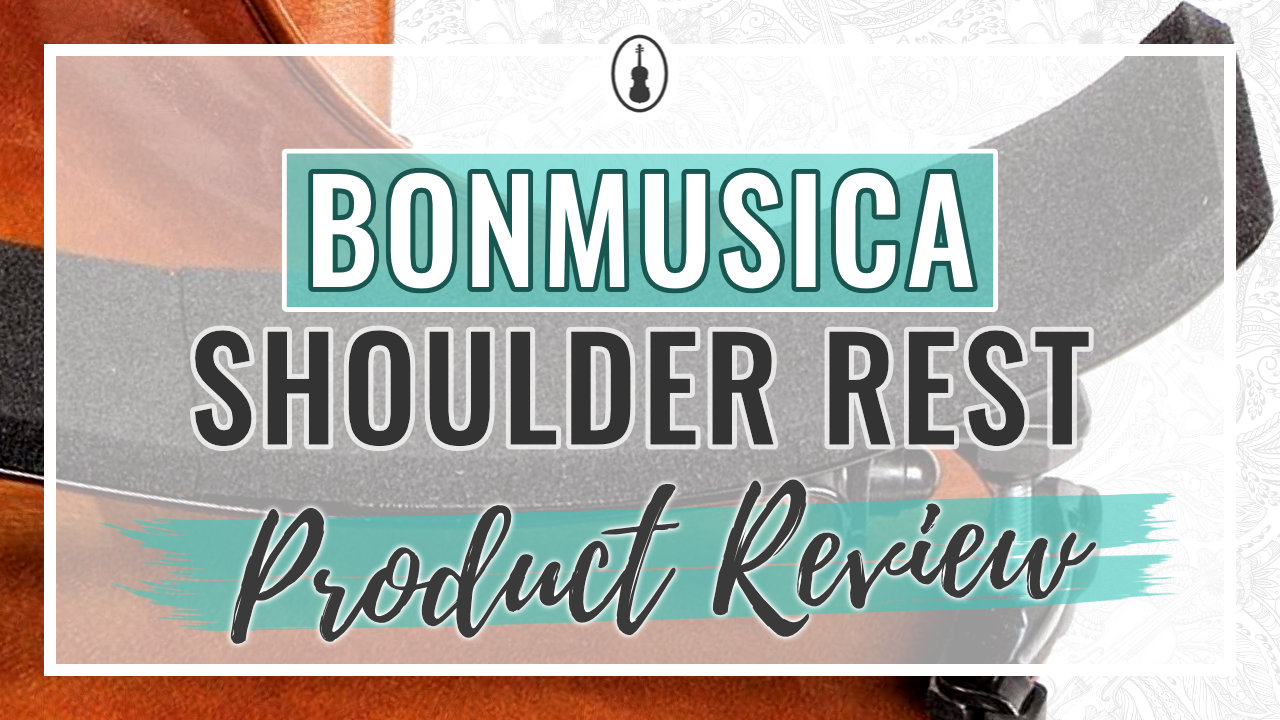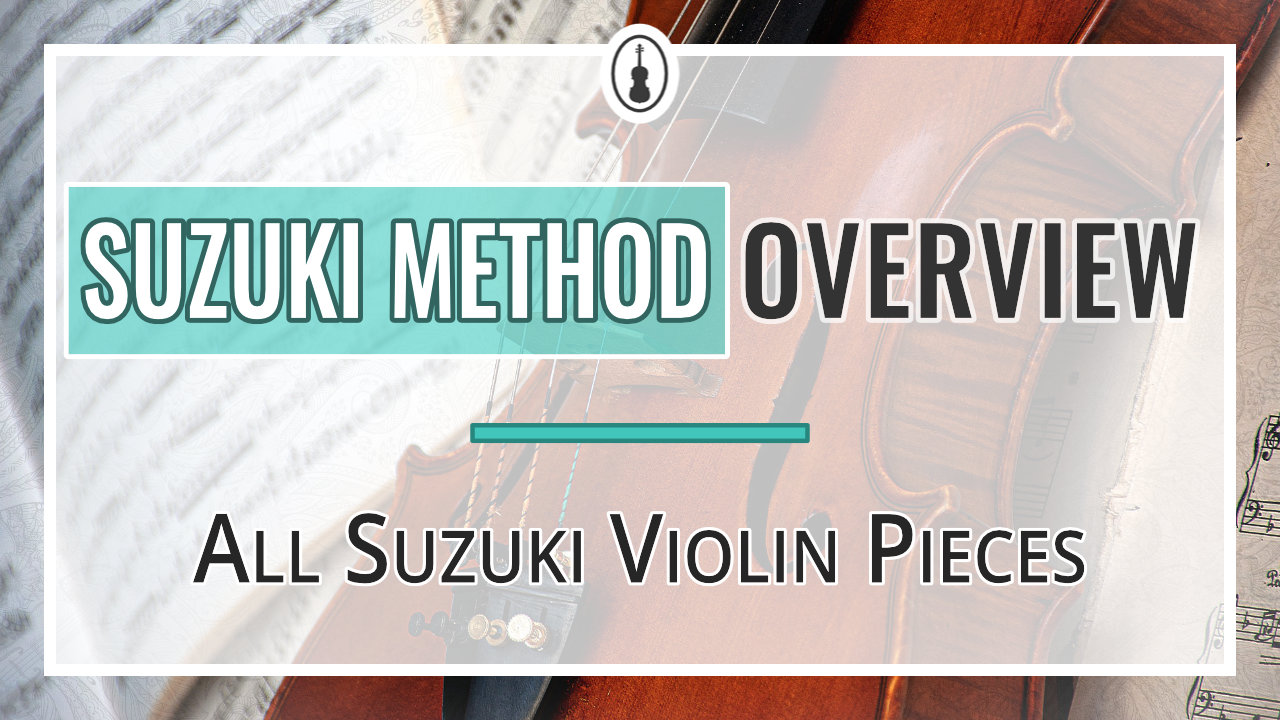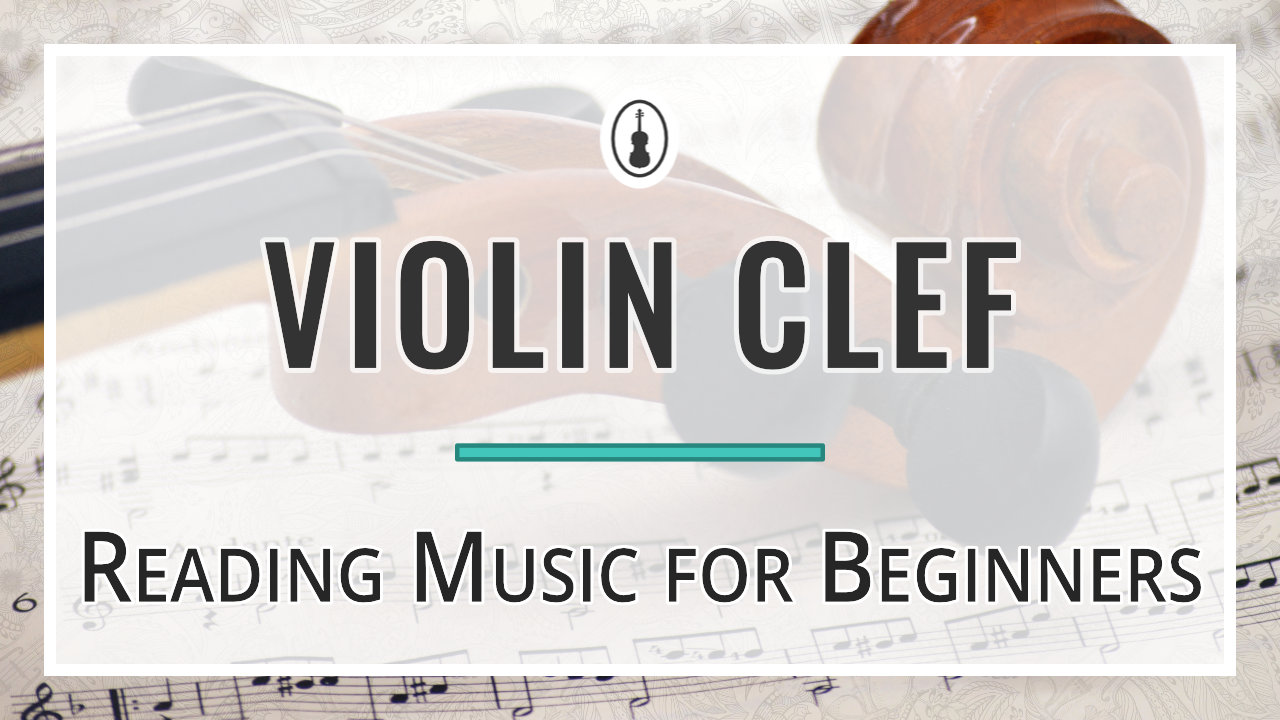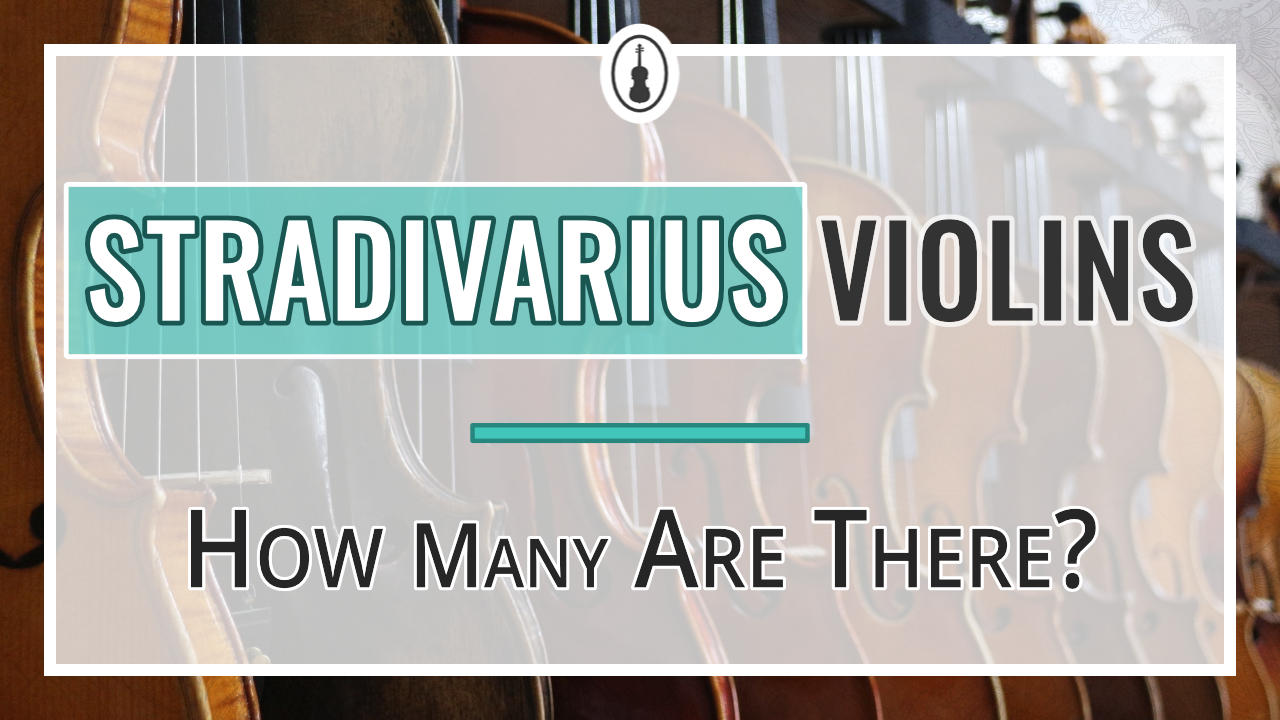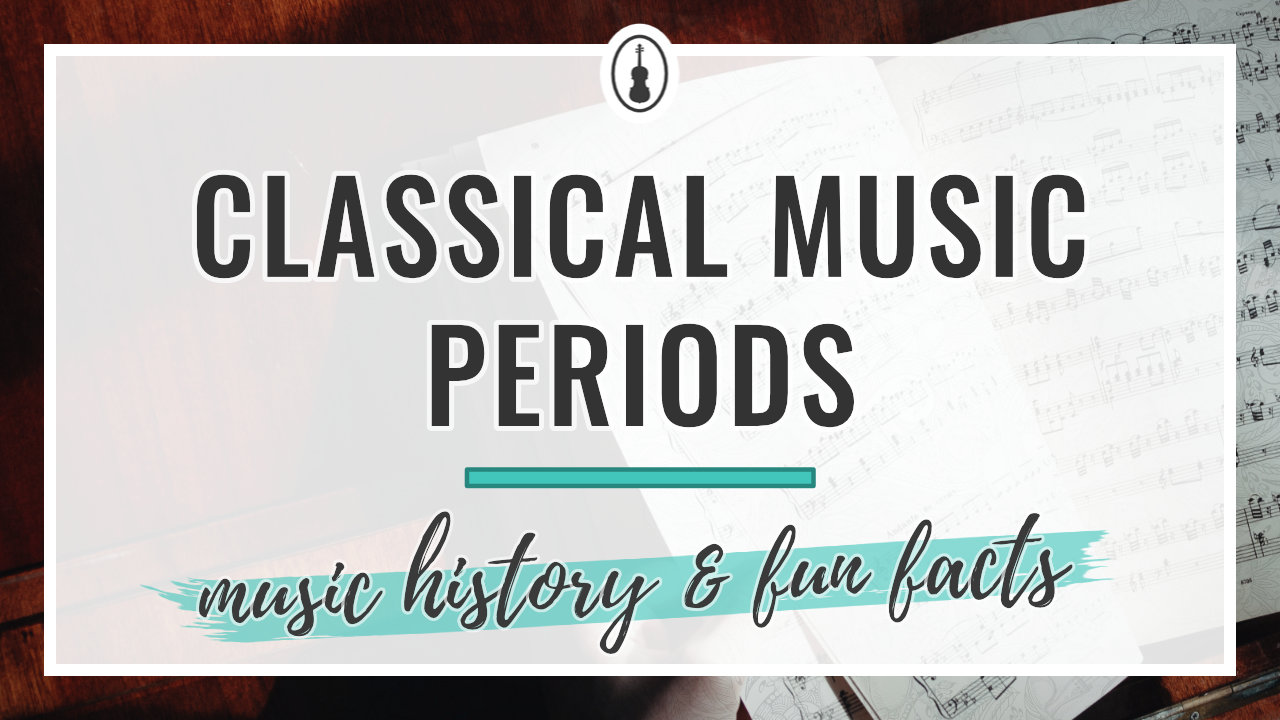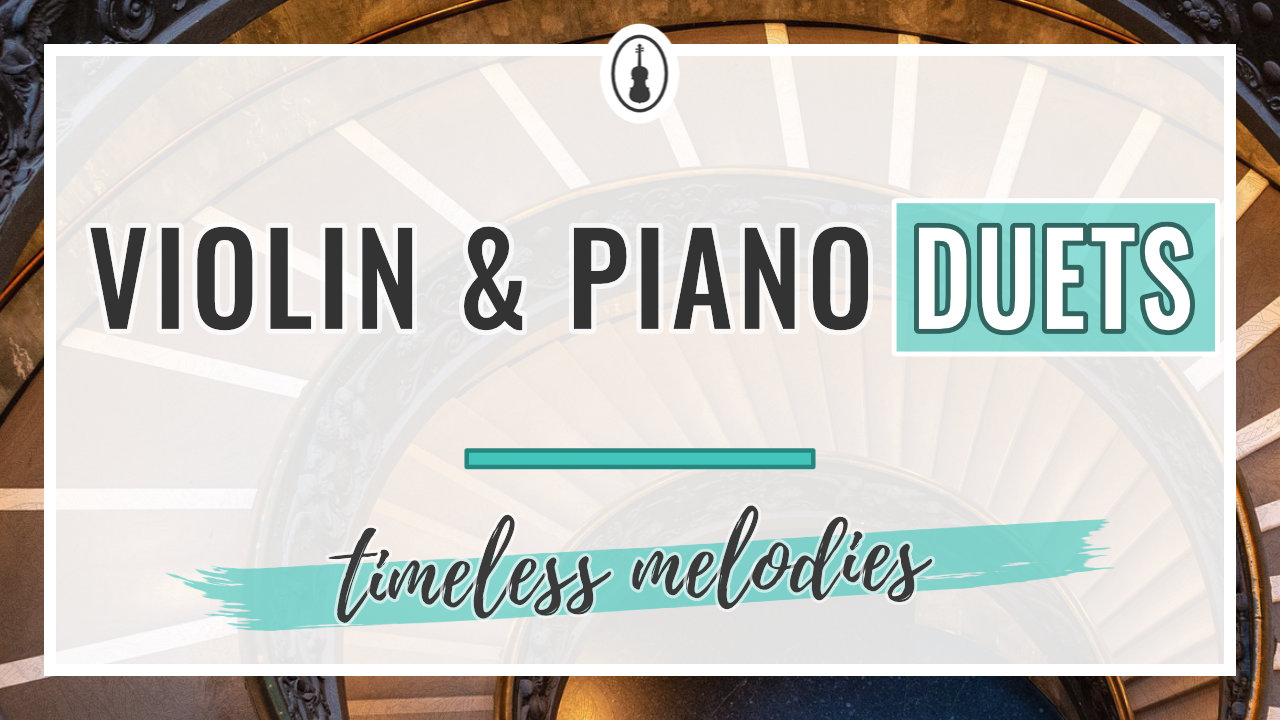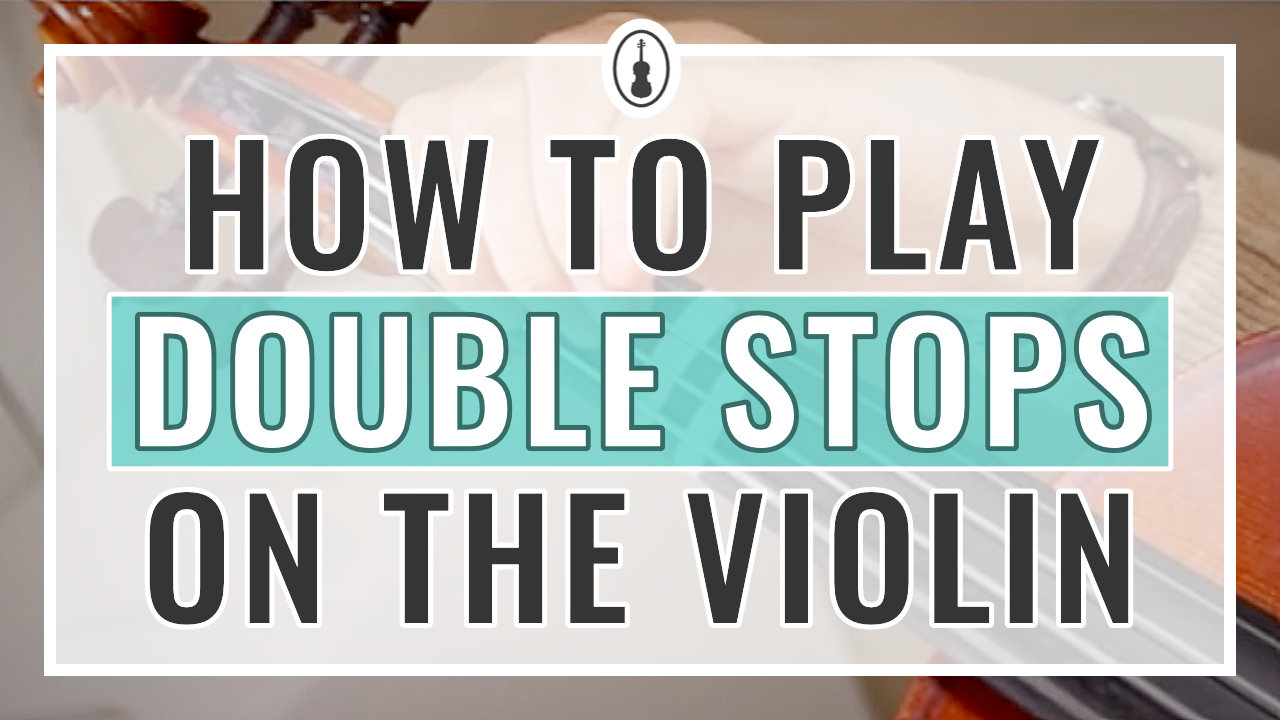Is your violin bow bouncing sometimes? Learn why and how to avoid it!
You’re about to play a piece of music you love, you get into the playing position and concentrate, you put your bow on the violin… and when you pull the bow down, it starts bouncing! Has this ever happened to you?
A bouncing bow can happen due to multiple reasons. Most of them have to do with technique but you might be surprised to learn that it may be entirely something else!
In this article, I’ll explain all the possible reasons and tell you how to avoid them to improve your violin sound!
What Is a Bouncing Bow?
A bouncing bow is when the bow shakes, makes small jumps on the string, or there is otherwise similar unwanted behavior of the bow while you’re playing. This is a common problem that can happen to anyone from time to time, but especially to beginner students. It may happen a lot, even when they are not on stage but in the comfort of their own home.
Bouncing bow may also refer to one of the bowing techniques where the bounces are actually intentional. Read on to find out about these techniques.
What Are the Reasons for Unwanted Bow Bounces?
Here are the eight most common reasons for unwanted bow bounces or shaking:
- Starting a bow stroke from above the string, dropping the bow
- Too much pressure on the bow
- Tension in your right hand and arm
- Incorrect right elbow position
- Low-quality bow
- Overtightened bow hair
- Stress and stage fright
- Hands shaking due to things you have eaten or drunk, e.g. coffee, or being very hungry
How to Avoid Bouncing With Your Violin Bow
To avoid a bouncing violin bow, first make sure that your bow technique is good: keep your bow moving in a straight line, your bow on the contact point, use your right hand and elbow to move the bow across a string and the shoulder when changing strings, don’t tilt your bow when it’s not needed, and make sure you know which bowing technique you should apply to the music or exercise.
You can read more about how to keep the bow straight in my article “How to Bow Straight on the Violin – a Beginner’s Guide“ and learn about the contact point from my free guide:
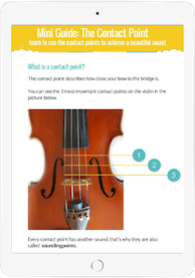
FREE Contact Point Guide
Improve Your Contact Points Technique
Below are 13 tips for you that will help you avoid unwanted violin bow bounces:
1. Place the Bow on the String Before Starting a Bow Stroke
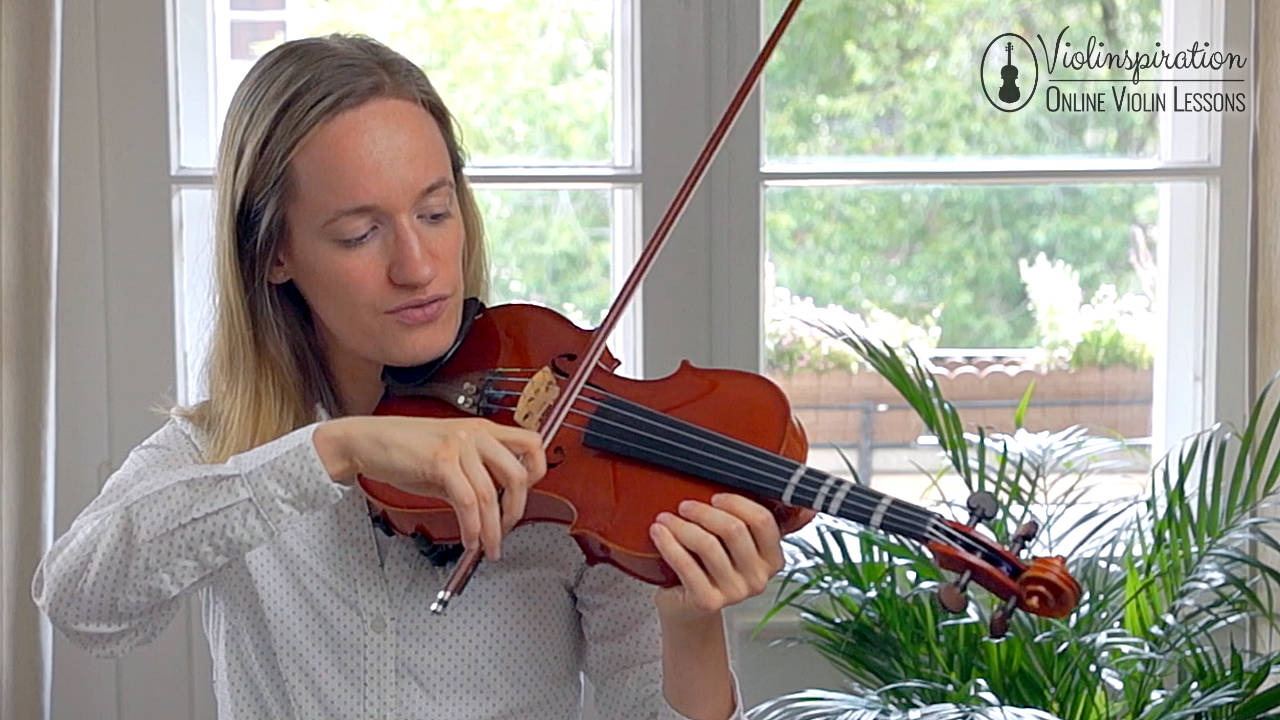
If you drop the bow with speed on the string, this most likely will end with a bounce.
There are bowing techniques that use this way of striking but they are usually for intermediate to advanced violinists. If you’re not trying to play using one of those techniques, make sure to place the bow on the string, relax your arm and bow grip, and then start moving the bow down or up.
2. Avoid Starting From the Middle of the Bow

Some parts of the bow make it easier to bounce, such as the middle. There are occasions where you should start from the middle or from the balance point, but generally speaking, you should put the bow near the frog or sometimes the tip and start there. You also get the whole bow available after doing that, which is always preferable.
3. Don’t Apply Too Much Pressure on the Strings
Sometimes you might apply more bow pressure than needed on the strings. The bow will bounce or shake, and the sound will suffer. Keep your wrist calm and hold the bow naturally. Make sure that you gently press the bow with your index finger, which transfers the weight of your arm.
4. Relax Your Right Hand
When holding the bow, you should feel like you are transferring the weight of your whole arm from your shoulder to your elbow, and from the elbow to your fingers. Your bow hold should be relaxed and your bow arm almost weightless. If you apply pressure through a tense hand instead, not only will your sound suffer, but your palm might start hurting after a bit.
5. Maintain the Correct Right Wrist and Elbow Position
Make sure not to bend your wrist too much, but only slightly. The weight transfer from your right arm to your fingers will be very difficult if your elbow is below your wrist. This might make your bow escape the straight line you’re playing. It will also lead to some bouncing and your sound will lack volume.
6. Don’t Apply More Pressure When Changing Bows
Beginner students might find it difficult to change from an up bow to a down bow, so during the change, they apply more pressure. Your changes should be as smooth as possible, almost to the point that a listener can’t tell when it’s happening if they’re not looking at you.
You can possibly have your elbow just a bit below your wrist (certainly not above) under certain occasions, but the general rule is that you should have them on the same line. Experiment for yourself to find the best position.
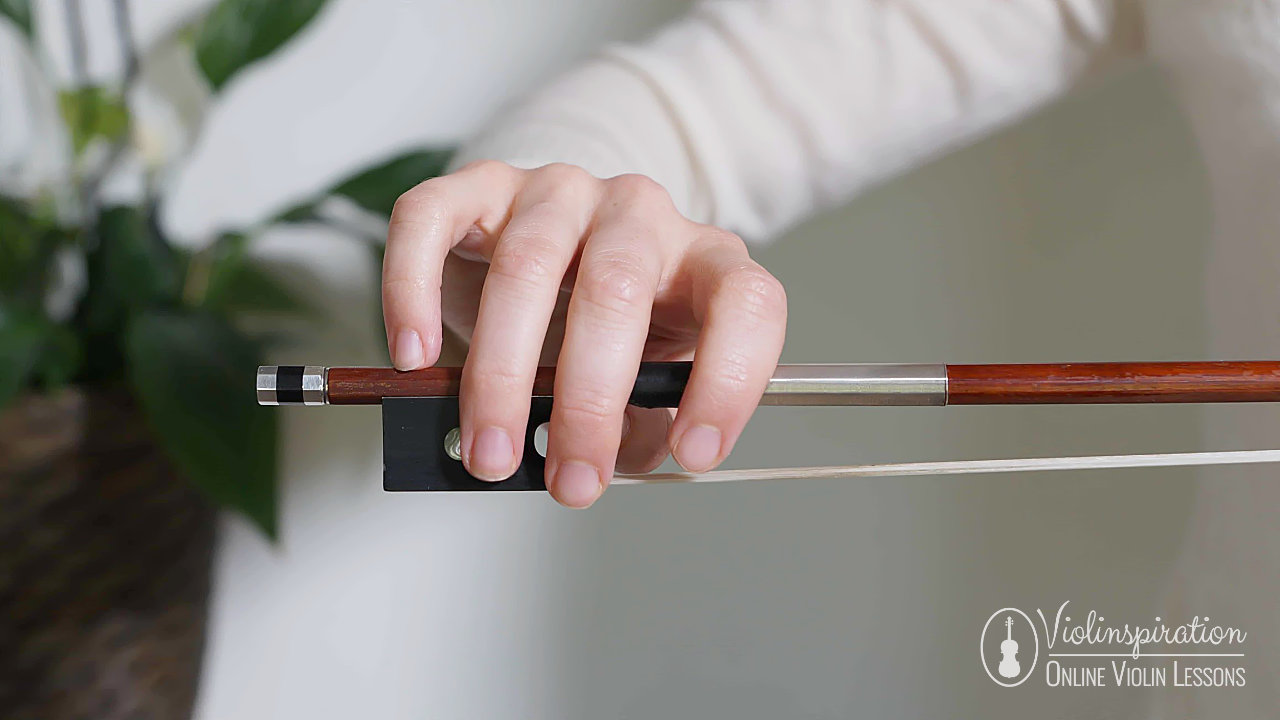
7. Consider Upgrading Your Equipment
Let’s face it, playing musical instruments is not a cheap hobby and it is understandable if you don’t want to spend much on your first violin, especially if you’re not sure how far you want to go. You can get a good first violin for about $150, but please keep in mind that this is not an actual good instrument, it is just one that does its job. Violins like that come with bows that are usually of the worst quality, compared to the violin.
In any case, the bow you’re using might not be of the best quality so you might be doing everything right and still get some bouncing. Try to play with a different bow and see for yourself how it feels and sounds. If there’s a difference, then consider buying a new bow.
8. Let a Luthier Adjust Your Bow
Maybe your bow is good but it can be better. Ask a luthier to check on your bow. He or she might do several tricks to adjust the weight of the bow and generally make it better. For example, a luthier may change the leather pad and other bow parts, so the bow weight decreases and it’s easier to use!
9. Don’t Tilt the Bow
Tilting the bow is a technique that is mostly dated. There are older teachers of certain schools that might still do it, but it doesn’t happen that often anymore. You might want to tilt the bow on certain occasions, mostly if you want a softer sound, especially in the frog area. If a softer sound is needed, you can tilt the bow.
However, don’t tilt the bow at all times. It is advised to not tilt it at all if you are a beginner, and then learn to do it when it is desirable.
10. Don’t Overtighten Your Bow Hair
Many students don’t know how much to tighten their bow hair and usually overdo it. It needs to be tight enough so it won’t be loose but not so tight that the stick will start to straighten. If you overtighten the hair, it will definitely create some bouncing.
On the other hand, though, if the hair is too loose, the stick will touch the strings, which will create an awful sound.
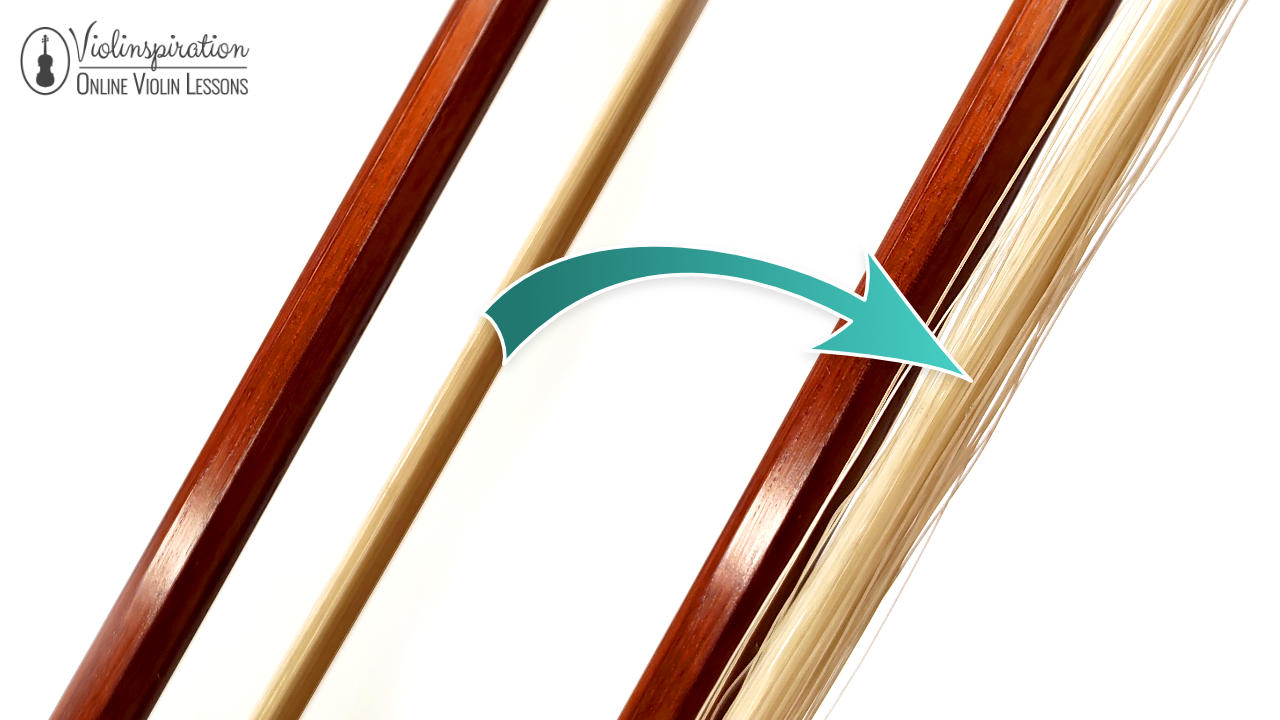
Also, please remember to loosen your bow hair after playing the violin. A lot of students forget to do it, and that damages the violin bow.
11. Learn to Switch Between Different Bow Techniques
As you progress and become more advanced, you’ll learn several bow techniques. Switching from detaché to spiccato might not seem easy at first and might make your bow bounce or shake.
First, you have to study each technique and the alteration very slowly to the point that you know it very well. If that doesn’t seem enough, you can try studying Sevcik’s 40 Variations, which contains several exercises on various bowing techniques. Actually, it’s recommended that you check this book out anyway, even if you don’t experience a bouncing bow.
Here you can download the book for free:
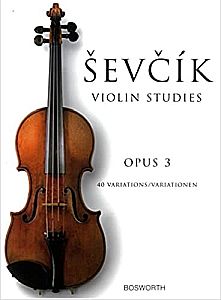
Sevcik – Violin Studies Op. 3
40 Variations
12. Learn to Deal With Stage Fright
It’s never easy to get up on stage (or even to just stand in front of your close ones) and perform. There’s much anxiety involved, especially for a beginner student. Note that this is not exclusive to beginners, as throughout your career, you may pass through several stages of stage fright. Nevertheless, it is something that all violinists deal with, or have at least had at some point.
Being anxious before performing will almost for sure result in bouncing bow, shaky bow, making mistakes you never have before, and similar unpleasantries, but we can definitely conclude that if your technique is good, this stress might be the most important reason for a bouncing bow.
While stage fright and anxiety differ from person to person, there are basically three things you can do to avoid it. Of course, experimentation on your part is required, to see what frightens you and what calms you down.
a) Pretend you are performing live
You can practice your live show when you are in your living room. Stay focused, play with your eyes closed, and pretend you are performing in a music hall.
While you can never replicate the conditions of a live performance, you can be somewhat prepared by doing this. You can take it a step further by gathering some friends and acquaintances at your home and rehearsing the whole performance.
b) Calm yourself when you are performing
Another way to avoid stage fright is to pretty much “face the music,” as they say. Stand in the spot where you’re going to perform and try to be as calm as possible. Take a few moments to relax and focus before starting your first note – it can make a world of difference.
Don’t do anything that might stress you up before. Don’t think about any possible distractions.
Go to your happy place, and make your mind comfortable with the situation. In reality, you should not worry, even if you give a bad performance, and even more if you are a beginner student. You’re supposed to learn; you’re not a professional, so this is a learning curve too, so don’t expect yourself to sound like Itzhak Perlman.
c) Perform as much as possible
Everyone has experienced at least some kind of stage fright. It’s natural to be worried, but the best way to get through it is to perform as much as possible. You can try different locations or audiences for whom you’re playing, and figure out what the best conditions are. This means you’ll also get to play under different circumstances, which greatly helps. If it starts to feel common to you, you can’t get too anxious about it.
There might be different things that calm you down. Yehudi Menuhin once said that he had terrible stage fright, but then he started doing yoga. And I think if Menuhin – one of the greatest violinists who ever lived – was anxious to go up on stage, you shouldn’t be any different. And hey, if you think yoga might help, why not?
If you’re looking for an occasion to play violin in a group of like-minded violin adult beginners, make sure to join my online school, Julia’s Violin Academy, and try playing your favorite tunes in our monthly recital sessions. I’m pretty sure that after such a recital, you’ll be much more confident about your playing.
13. Be Careful What You Eat and Drink
First of all, make sure you don’t forget to eat! Next, be careful what you eat and drink because, for example, such a popular drink as coffee can make your hands shake. Avoid drinking coffee before playing, and definitely before a live performance.
Take a short moment to analyze your diet and see what else might be causing your hands to shake.
When Bouncing With Your Bow Is Needed
There are bow techniques that require bouncing. In this case, the bouncing is controlled and usually, it’s not a random jumping of the bow (although that may be the case in some contemporary compositions). Here are some of the bouncing bow techniques:

Spiccato
Similar to staccato (a shortened note played with a bite), but you bounce your bow. Short single strokes produce the sound by dropping the middle of the bow onto the violin string. Spiccato doesn’t sound as sharp as staccato and it is used mostly on fast passages.

Flying Staccato
Flying staccato is when you have several staccato notes on one slur. Usually, you have an up bow and then you continue by gently bouncing the bow.

Flying Spiccato
Flying spiccato is similar to flying staccato, but the point of contact remains the same.

Ricochet
Ricochet looks like flying staccato but it usually requires changing strings. The notes are played by the calculated bouncing of the bow, produced after you hit the first note. It needs very good control of the bow arm.

Sautillé
Sautillé is yet another quick bouncing bow stroke. Keep your bow just a bit higher than usual and let it jump on the string. This is different than spiccato, as the bow is never lifted from the strings.

Jeté
Jeté is a controlled “throwing” of the bow that makes use of the bouncing.
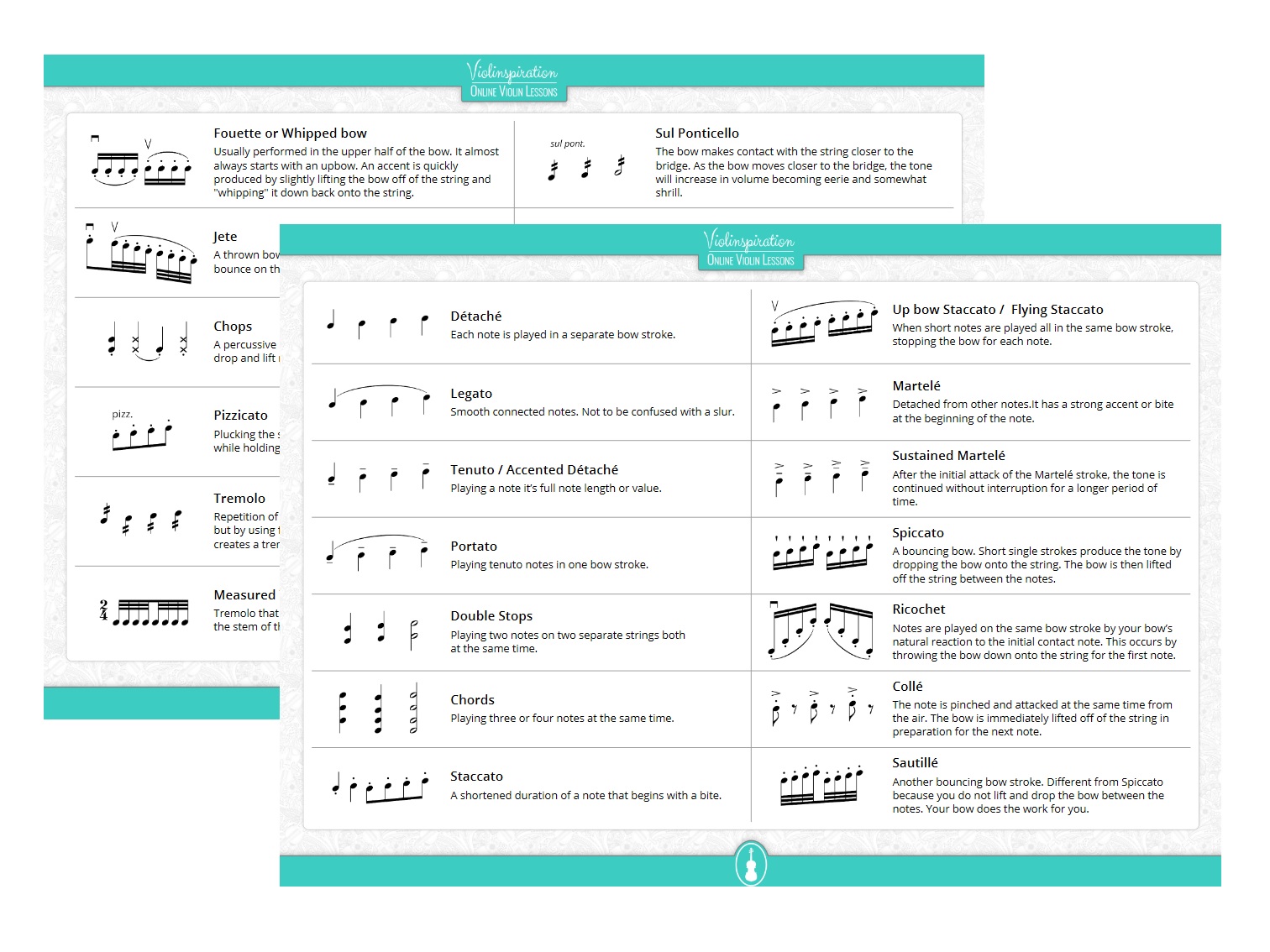
Download Free Bowing Cheat Sheet!
An Easy Overview of All Bowings and Signs
Final Note
The unwanted bouncing of a violin bow is something that happens to all violin players, but there are ways to deal with it and prevent it. I hope that the tips I have shared with you in this post will help you work on reducing the unwanted bounces and eventually remove them from your violin playing.
Please remember that in general, to avoid a bouncing bow, the most important thing is to learn the correct bow arm techniques to give you control over the bow. Apart from that, I highly encourage you to experiment and see what makes you feel more comfortable while playing with a good sound.

FREE Contact Point Guide
Improve Your Contact Points Technique
